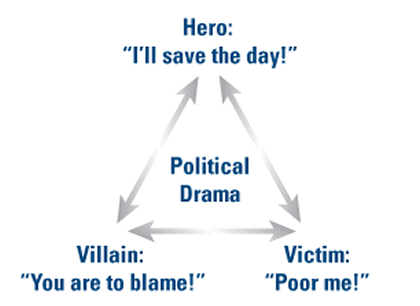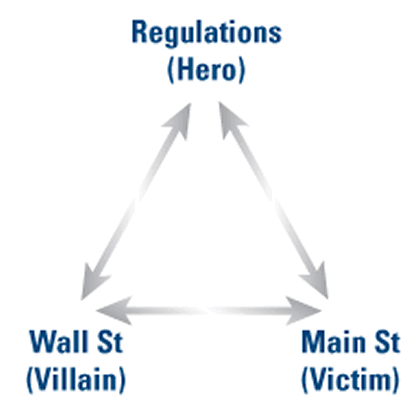Time to Stop Blaming and Start Solving the Credit Crisis Debt Problems
Politics / Credit Crisis 2008 Oct 21, 2008 - 01:06 PM GMTBy: Frank_Holmes
 One of the key reasons behind the current financial crisis is that the big investment banks, hedge funds and other financial companies borrowed way too much money. Another key reason we're in this big mess is that way too many American households borrowed way too much money.
One of the key reasons behind the current financial crisis is that the big investment banks, hedge funds and other financial companies borrowed way too much money. Another key reason we're in this big mess is that way too many American households borrowed way too much money.
Extreme debt is the common denominator that links Wall Street and Main Street , and the numbers are truly staggering. When the debt suddenly came due, neither Street had anywhere near the cash to cover it. Overleveraging hurt hedge funds when markets got tougher and many of their investors wanted their money back. These hedge funds were forced to sell sizable positions in natural resources and energy equities, driving prices down sharply.
And let's not forget the leverage being used by the government through deficit spending that has piled up $10 trillion in federal debt.
We now find ourselves playing the blame game, and during this political season, nearly all of the blame is falling on Wall Street. The massive injection of capital to rescue the global financial system is being called a “Wall Street bailout,” as if Wall Street were wholly responsible for the crisis.
That's not the accurate way to look at it—it should be considered a “workout” of a problem that built up for nearly a decade.

Here is a good visual to illustrate the drama that's created when the goal is to find someone to blame. It's a drama that plays out every day in households across the country. A child hasn't done his or her homework or chores and one parent gets perturbed about that, which makes the child cry. In this dynamic, the child becomes the victim and the parent becomes the villain blamed for upsetting the child, and the child runs to the other parent, who takes the role of the hero to save the day.

This same dynamic is found in business. In the current crisis, the hero is going to be the government or the media, and the victim is the Main Street investor and of course the villain is the brokers and the money managers.
But are more regulations really the hero? And is Main Street really a victim? Do we need more regulations? Or would it be smarter to rethink the current regulations rather than just layering regulations upon regulations? Federal lawmakers last year produced something like 70,000 pages of regulations—is that really the answer?

And who is going to foot the bill to fix the problems? Roughly 80 percent of taxes are paid by the top 20 percent of the population, and the remaining 80 percent of the population pays just 20 percent of the taxes. And nearly all of the zero-percent-down and other dubious mortgages were taken out by a small segment of the Main Street population, some who bought homes they clearly couldn't afford and others who were trying to get rich quick. It's not so evident who's the victim and who's the villain.
We have little time to waste on playing the blame game. The government, Wall Street and Main Street are all addicted to debt. The government now has two weapons in its arsenal—monetary policy and tax policy.
The Treasury and its counterparts in the G-7 have started the monetary process by dropping interest rates and increasing the money supply, and that has started the healing process. This helps banks to start lending to each other again and creates the needed liquidity to stop the steep economic tumble.
Now we need the government to have a fiscal plan to create sustainable jobs rather than one-time “stimulus” checks that get spent on consumer goods. We advocate no new taxes and cuts for wasteful spending, and that the government dedicate itself to infrastructure projects that will create new jobs and repair the nation's roads, bridges and other critical facilities.
By Frank Holmes, CEO , U.S. Global Investors
Frank Holmes is CEO and chief investment officer at U.S. Global Investors , a Texas-based investment adviser that specializes in natural resources, emerging markets and global infrastructure. The company's 13 mutual funds include the Global Resources Fund (PSPFX) , Gold and Precious Metals Fund (USERX) and Global MegaTrends Fund (MEGAX) .
More timely commentary from Frank Holmes is available in his investment blog, “Frank Talk”: www.usfunds.com/franktalk .
Please consider carefully the fund's investment objectives, risks, charges and expenses. For this and other important information, obtain a fund prospectus by visiting www.usfunds.com or by calling 1-800-US-FUNDS (1-800-873-8637). Read it carefully before investing. Distributed by U.S. Global Brokerage, Inc.
All opinions expressed and data provided are subject to change without notice. Some of these opinions may not be appropriate to every investor. Gold funds may be susceptible to adverse economic, political or regulatory developments due to concentrating in a single theme. The price of gold is subject to substantial price fluctuations over short periods of time and may be affected by unpredicted international monetary and political policies. We suggest investing no more than 5% to 10% of your portfolio in gold or gold stocks. The following securities mentioned in the article were held by one or more of U.S. Global Investors family of funds as of 12-31-07 : streetTRACKS Gold Trust.
Frank Holmes Archive |
© 2005-2022 http://www.MarketOracle.co.uk - The Market Oracle is a FREE Daily Financial Markets Analysis & Forecasting online publication.



